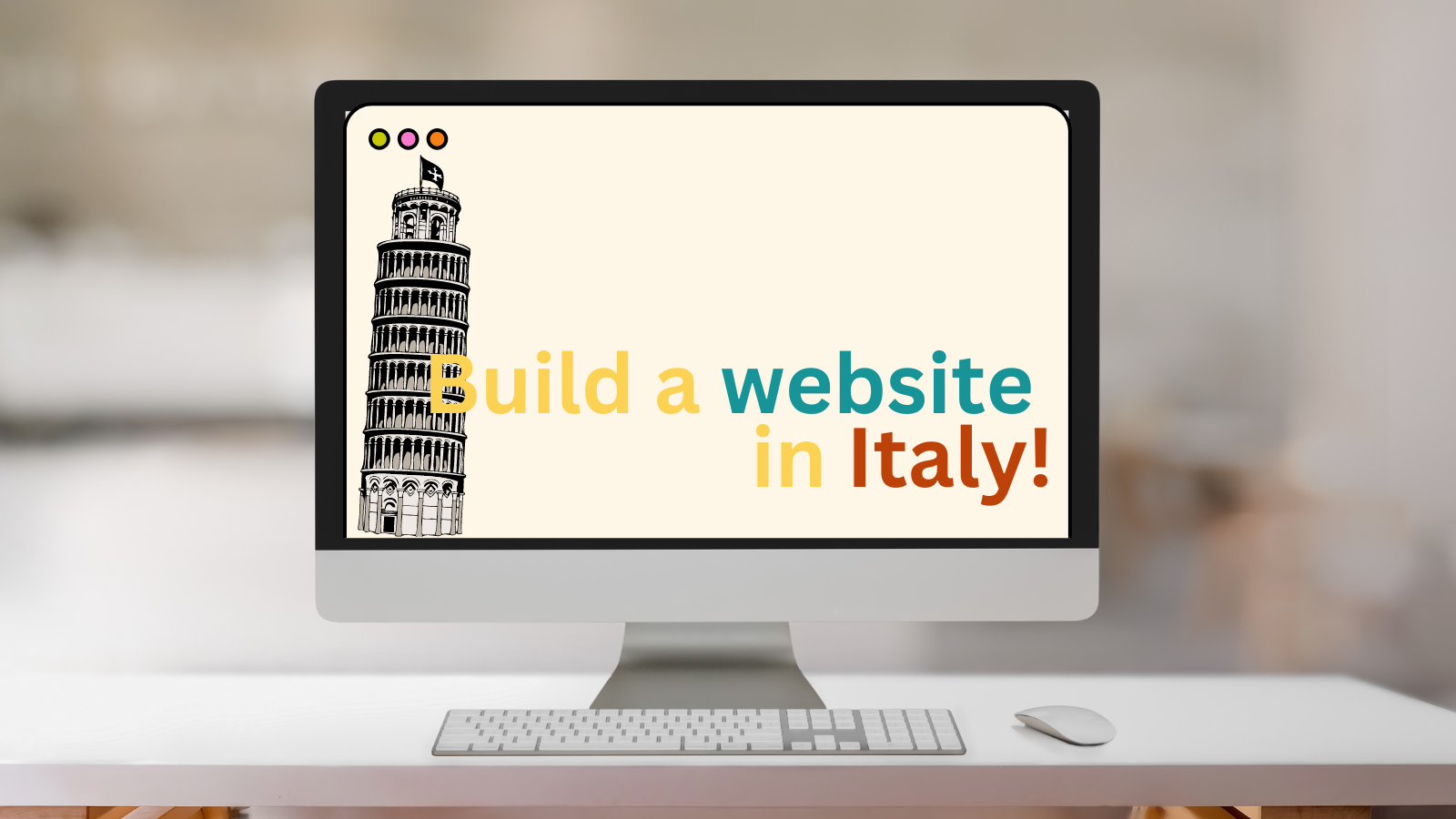Building a website in Italy is an exciting journey, whether starting a blog, launching a business, or setting up an online store. Creating a website today is easier than ever, thanks to user-friendly platforms like Hostinger. In this blog, we’ll guide you step-by-step on how to build your website in Italy, taking into account the special considerations you need to be aware of. By the end, you’ll have a professional website that meets all local requirements and appeals to your audience.
Step 1: Signing Up for an Account with Hostinger
The first step in building your website is choosing a reliable web hosting provider. Hostinger is an excellent choice for anyone in Italy, offering affordable plans, fast loading times, and 24/7 customer support.
Starting from $2.99/month
Discount Code: MYFIRSTWEBSITE
Key Features
Extremely affordable
User-friendly control panel
LiteSpeed Cache for faster loading times
Why We Recommend It
Storage and Bandwidth:
30 GB SSD storage
100 GB bandwidth
Extras:
Free SSL certificate
Pros & Cons
- Low starting price
- Good performance for the price
- No free domain in the lowest-tier plan
- Support can be slow during peak times
How to Sign Up:
- Visit the Hostinger Website: Go to Hostinger and click the “Get Started” button.
- Choose a Plan: Hostinger offers several plans tailored to your needs. The “Single Web Hosting” plan is an excellent start for a simple blog or small business website. If you need more resources or want to build an online store, consider the “Business Web Hosting” or “eCommerce Hosting” plans.
- Create an Account: Sign up with your email address, Google account, or Facebook account.
- Complete the Purchase: Enter your payment details and complete the purchase to get started.
Step 2: Selecting a Domain Name
Your domain name is the address people will use to find your website, so choosing something that reflects your brand or purpose is essential.
Tips for Choosing a Domain Name:
- Keep It Simple: Choose a name that is easy to remember and type.
- Use Keywords: Include keywords related to your business or content. This helps with SEO.
- Consider the Extension: In Italy, popular domain extensions include .it, .com, and .eu. If your website is targeting an Italian audience, using.it is a good idea.
Registering Your Domain:
Once you’ve chosen your domain name, Hostinger makes it easy to register it. During sign-up, you can check if your desired domain is available and register it on the spot.
Step 3: Choosing a Website Template
With your hosting plan and domain name set up, it’s time to choose a website template. Hostinger offers a variety of templates that cater to different industries and styles.
How to Choose a Template:
- Browse Templates: Log in to your Hostinger account and access the website builder. Here, you can browse through hundreds of templates.
- Consider Your Audience: Choose a template that suits the tone and style of your website. For example, look for eCommerce templates if you’re building an online store.
- Mobile-Friendly: Make sure the template is responsive and looks good on desktop and mobile devices.
Step 4: Editing the Website Content Using the Website Builder
Once you’ve selected a template, it’s time to customize your website. Hostinger’s website builder makes this process simple, even if you don’t have any coding experience.
Editing Your Website:
- Replace Text and Images: Click on the text and image placeholders to replace them with your content. Write your website’s content in Italian if your primary audience is in Italy.
- Customize the Layout: Adjust the layout by dragging and dropping elements like text boxes, images, and buttons.
- Add Your Logo: Upload your company logo to make your website look professional.
Step 5: Creating New Pages
Your website will likely need several pages, such as a homepage, about page, contact page, and any others relevant to your content or business.
How to Add New Pages:
- Add Pages: In the website builder, look for an option to add new pages. Name each page according to its content, such as “Home,” “About Us,” or “Shop.”
- Set Up Navigation: Make sure to add each new page to your website’s navigation menu so visitors can easily find what they’re looking for.
Step 6: Adding an Online Store (Optional)
Adding an online store is essential if you plan to sell products or services through your website.
Setting Up an Online Store:
- Choose an eCommerce Template: If you haven’t already, select a template that supports eCommerce.
- Add Products: Use the website builder to create product listings. Include high-quality images, descriptions, and prices.
- Set Up Payment Methods: Offer payment options popular in Italy, such as credit cards, PayPal, and possibly local options like PostePay.
Step 7: Optimizing the Website for Search Engines (SEO)
Search Engine Optimization (SEO) is crucial to making sure your website appears in search engine results when people look for services or content related to your website.
SEO Tips:
- Use Keywords: Include relevant keywords in your website content, titles, and meta descriptions. For example, if you’re selling shoes, include keywords like “buy shoes in Italy.”
- Optimize Images: Use descriptive file names for images and add alt text to help search engines understand what the images represent.
- Create High-Quality Content: Regularly update your website with valuable content that your audience will find helpful.
Step 8: Special Considerations for Building a Website in Italy
Some specific legal and cultural considerations must be remembered when building a website in Italy.
Legal Requirements:
- E-commerce Regulations: If you’re selling products or services online, comply with Italian and European Union regulations regarding online sales. This includes clear pricing, return policies, and terms of service.
- Website Accessibility: Follow the European Union’s web accessibility directive, ensuring that your website is usable by people with disabilities. This might include using accessible design features like text alternatives for images and keyboard navigation.
- GDPR Compliance: The General Data Protection Regulation (GDPR) is a set of laws protecting the personal data of European Union citizens. Make sure your website includes a privacy policy and a cookie consent banner.
Cultural Norms and Preferences:
- Language: Make sure that your website is available in Italian, as this is the preferred language for most users in Italy.
- Payment Methods: Offer popular local payment options, such as PostePay or bank transfer, and standard options like credit cards and PayPal.
- Customer Support: Provide customer support in Italian, whether through email, chat, or phone, to make it easier for your audience to get help when needed.
Local SEO:
- Use Local Keywords: Include location-specific keywords in your content, such as “restaurant in Rome” or “Florence tour guide,” to improve your chances of appearing in local search results.
- Register Your Business on Google My Business: If you have a physical location, create a Google My Business listing to make it easier for locals to find you.
Step 9: Previewing and Publishing the Website
Once you’ve added all your content and optimized your site, it’s time to preview and publish your website.
Previewing Your Website:
- Check for Errors: Before publishing, carefully review your website for spelling mistakes, broken links, or formatting issues.
- Test on Different Devices: Make sure your website looks good on desktop and mobile devices. Most visitors will likely access your site from a smartphone, so mobile optimization is crucial.
Publishing Your Website:
- Click Publish: Once you’re happy with how everything looks, click the “Publish” button in Hostinger’s website builder. Your website is now live!
- Monitor Performance: After publishing, monitor your website’s performance using tools like Google Analytics. This will help you understand how visitors interact with your site and where you can improve.
Conclusion
Building a website in Italy is straightforward when you follow these steps. Using Hostinger’s powerful tools, you can create a professional and secure website that meets all local regulations and caters to your audience’s needs. Whether starting a blog, launching a business, or setting up an online store, your website will be well-equipped to succeed in the Italian market. Remember to keep your website updated, secure, and optimized for search engines to ensure it continues to grow and attract visitors.





